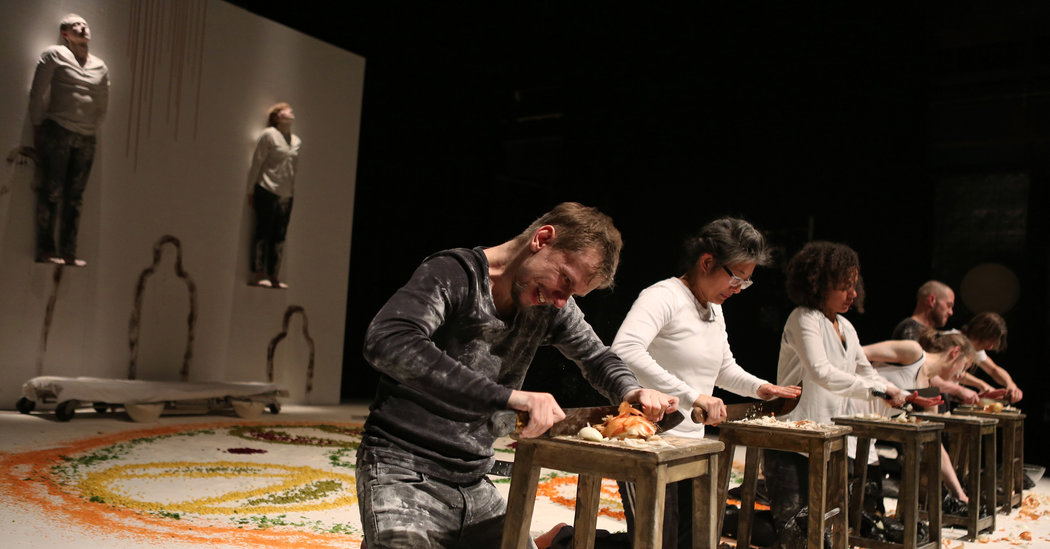Postmodern and postdramatic theory

Despite the fact that Lehmann opts for the term ‘postdramatic’ instead of ‘postmodern’ to describe the new theatre, his theory of postdramatic theatre is of course resonating with many aspects of postmodernist and poststructuralist thinking. Notably Lyotard’s analysis of the postmodern condition as an ‘incredulity towards grand narratives’38 has a bearing on it, since the connection between the historical dominance of drama and a teleological philosophy of history runs deep. As Lehmann explains in his section on ‘Drama and dialectic’ the structure of classical drama with its conflicts and resolutions has been the model for a desired, imagined or promised development of history. The experiences of World War II, the Holocaust and Hiroshima, however, have fundamentally shaken the belief in this historical model, which explains why postwar practitioners such as Samuel Beckett, Tadeusz Kantor and Heiner Müller eschew the dramatic form in the wake of these events.
The application of postmodern and especially poststructuralist discourses to contemporary theatre and performance has certainly generated a wealth of insightful studies and is an ongoing endeavour of which this study is ultimately a part. Yet apart from a problematic inflationary and often superficial use of the term ‘postmodern theatre’ or worse ‘postmodern drama’, and apart from the difficulties surrounding any categorical definition of what the ‘postmodern’ actually is39 (depending also on whether it is approached through Lyotard, Baudrillard or Jameson to name but some of the major thinkers), scholars and practitioners have sometimes expressed unease about the fact that these discourses originated outside of theatre and performance. Thus Johannes Birringer states:
What postmodern theories of textuality and visual representation (and the spectating subject examined by film theory) lack is a more concrete historical understanding of the complex and conflicted relations of text and language to performance and space in the theatre. Even more importantly they lack a concrete theatrical knowledge of the reconceptions and revisions of various approaches to the acting in, and staging of, textual and contextual (scenographic, choreographic and musical) work carried out by several generations of avant-garde artists in this century.40
More recent studies, including Birringer’s own, have since partially rectified this situation. Nick Kaye’s rigorous theorization of the relationship between postmodernism and performance has argued against the model of a ‘postmodern style’ (derived from a discourse on postmodern architecture) and – turning the tables – has instead proposed that ‘performance may be thought of as a primary postmodern mode’.41 Lehmann’s study could be seen to act as a further corrective and as providing the ‘missing link’ by tracing a trajectory from within theatre aesthetics. For, as Wessendorf puts it succinctly
Even though the concept of postdramatic theatre is in many ways analogous to the notion of postmodern theatre, it is not based on the application of a general cultural concept to the specific domain of theatre, but derives and unfolds from within a long-established discourse on theatre aesthetics itself, as a deconstruction of one of its major premises.42
To practitioners, the term ‘postdramatic theatre’ may in the end be just another ‘describing word’, as Forced Entertainment’s Claire Marshall says in interview about the term postmodernism: ‘You don’t set out to make a postmodernist [or postdramatic] piece of work.’43 Nevertheless, for practitioners, students, scholars and fans of contemporary theatre, the analyses provided in this book should contribute an invaluable theoretical vocabulary for reflecting on this work and for articulating its aesthetics and politics.
38 See J.-F. Lyotard, The Postmodern Condition: A Report on Knowledge, trans. by G. Bennington and B. Massumi, foreword by F. Jameson, Minneapolis: University of Minnesota Press, 1984.
39 For an in-depth discussion see N. Kaye, Postmodernism and Performance, London: Macmillan, 1994.
40 J. Birringer, Theatre, Theory, Postmodernism, Bloomington and Indianapolis: Indiana University Press, 1991, p. 43.
41 Kaye, Postmodernism and Performance, especially the chapter ‘From Postmodern Style to Performance’.
42 Wessendorf, ‘The Postdramatic Theatre of Richard Maxwell’.
43 M. McGuire, ‘Forced Entertainment on Politics and Pleasure’, Variant, vol. 5, available online at
Hans-Thies Lehmann «Postdramatic Theatre» кітабынан
